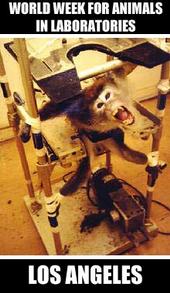| About Us | Contact Us | Calendar | Publish | RSS |
|---|
|
Features • latest news • best of news • syndication • commentary Feature Categories IMC Network:
Original Citieswww.indymedia.org africa: ambazonia canarias estrecho / madiaq kenya nigeria south africa canada: hamilton london, ontario maritimes montreal ontario ottawa quebec thunder bay vancouver victoria windsor winnipeg east asia: burma jakarta japan korea manila qc europe: abruzzo alacant andorra antwerpen armenia athens austria barcelona belarus belgium belgrade bristol brussels bulgaria calabria croatia cyprus emilia-romagna estrecho / madiaq euskal herria galiza germany grenoble hungary ireland istanbul italy la plana liege liguria lille linksunten lombardia london madrid malta marseille nantes napoli netherlands nice northern england norway oost-vlaanderen paris/Île-de-france patras piemonte poland portugal roma romania russia saint-petersburg scotland sverige switzerland thessaloniki torun toscana toulouse ukraine united kingdom valencia latin america: argentina bolivia chiapas chile chile sur cmi brasil colombia ecuador mexico peru puerto rico qollasuyu rosario santiago tijuana uruguay valparaiso venezuela venezuela oceania: adelaide aotearoa brisbane burma darwin jakarta manila melbourne perth qc sydney south asia: india mumbai united states: arizona arkansas asheville atlanta austin baltimore big muddy binghamton boston buffalo charlottesville chicago cleveland colorado columbus dc hawaii houston hudson mohawk kansas city la madison maine miami michigan milwaukee minneapolis/st. paul new hampshire new jersey new mexico new orleans north carolina north texas nyc oklahoma philadelphia pittsburgh portland richmond rochester rogue valley saint louis san diego san francisco san francisco bay area santa barbara santa cruz, ca sarasota seattle tampa bay tennessee urbana-champaign vermont western mass worcester west asia: armenia beirut israel palestine process: fbi/legal updates mailing lists process & imc docs tech volunteer projects: print radio satellite tv video regions: oceania united states topics: biotechSurviving Citieswww.indymedia.org africa: canada: quebec east asia: japan europe: athens barcelona belgium bristol brussels cyprus germany grenoble ireland istanbul lille linksunten nantes netherlands norway portugal united kingdom latin america: argentina cmi brasil rosario oceania: aotearoa united states: austin big muddy binghamton boston chicago columbus la michigan nyc portland rochester saint louis san diego san francisco bay area santa cruz, ca tennessee urbana-champaign worcester west asia: palestine process: fbi/legal updates process & imc docs projects: radio satellite tv |
Animal Rights:
previous page 3 next page |
single feature archives |
weekly archives
About 50 activists gathered in Westwood to protest the use of live animals in outdated experiments at UCLA. Four activists dressed as a monkey, rabbit, beagle and cat with bloody bandages sat in cages for hours until they were "liberated" by masked activists dressed in black.
Since the early 80's UCLA has been funded by government agencies NIH and NEI to perform questionable experiments on live animals such as methamphetamine and tobacco addiction in non-human primates. Joaquin Fuster has received over $5,000,000.00 to study the stimuli of non-human primates brains. A barbaric experiment which involves restraining non human primates in restraint chairs, drilling into their skulls, inserting electrodes and in order to force them to "reach" for sustenance deprives them of food and water for up to 24 hours. These experiments often result in infections of the brain and are most certainly invasive, painful and unnecessary causing extreme stress and eventual death of the monkey. Virtually identical research funded by taxpayers is being done in other Californian universities as well as hundreds of labs across the states with no benefit to medical advancement. Full report: WORLD WEEK FOR ANIMALS IN LABS 2010 by Igraine Pendragon
On August 31, 2009 an appeals judge lifted an existing ban on Navy sonar, and ruled against a lawsuit that would have prevented the U.S. Navy from resuming sonar training exercises off Southern California. The training exercises thus commenced on September 11, 2009 off San Diego. Within two weeks at least three great blue whales were reported floating dead off the Southern California coast. On October 12, another great blue whale was found dead off Big Sur. On Monday, October 19 yet another blue whale washed ashore, this time at Fort Bragg in Northern California. The latest incident has raised serious questions of whether or not the sonar used by the survey vessel confirmed to have hit the whale might have been responsible.
Full report: Blue Whale Deaths Off the California Coast by David Gurney Thursday, June 25, 2009: PETA activists staged a 'caged tiger' protest in downtown Anaheim. Their goal: to educate the public about Ringling Circus animal abuse. One supporter pointed out that animals suffer as do humans, and that "the planet belongs to them, too."
"I think it's very sad that we use animals for entertainment," remarked another supporter. A passerby was more critical, saying that "you" need to start by learning to respect people first. Photos and video: PETA vs. Ringling by df
There is a better way to deal with insects. Various companies make a science toy called the Bug Vacuum. (The one I've been using is made by a company called Summit, which I bought at a school supply store .) It sucks insects into a transparent holding area so that children can study them and then turn them loose. However, for the last several years, I've been using it to catch bugs in my home and set them free outside.
Story and photos: Obama Needs a Bug Vacuum by RP The US Food and Drug Administration (FDA) just moved a step closer to allowing companies to create genetically engineered animals. The FDA is proposing to allow the creation of animals that will be used to produce medicine, organs for transplant, meat or genetically engineered pets; and experiment subjects.
Canadian author Margaret Atwood wrote about many of these same possibilities in her best-selling and starkly apocalyptic book Oryx and Crake. It seems that in 2003, Atwood's book made more waves and garnered more headlines than the recent FDA's public forum requesting input on their proposed Draft Guidance for Industry: Regulation of genetically engineered animals containing heritable rDNA constructs. Full story: Genetically Modified Animals by Valerie Williams Animal Rights: previous page 3 next page | single feature archives | weekly archives |



 WORLD WEEK FOR ANIMALS IN LABS 2010
WORLD WEEK FOR ANIMALS IN LABS 2010 Navy's New Sonar System Suspected in Blue Whale Deaths
Navy's New Sonar System Suspected in Blue Whale Deaths PETA vs. Ringling
PETA vs. Ringling Obama Needs a Bug Vacuum
Obama Needs a Bug Vacuum Genetically Modified Animals
Genetically Modified Animals